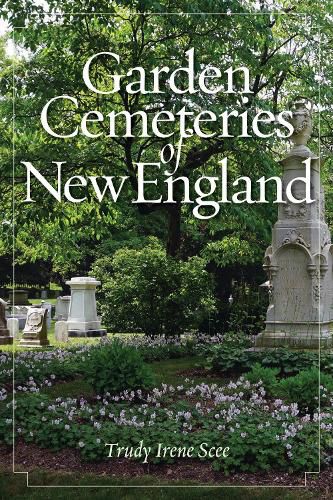Readings Newsletter
Become a Readings Member to make your shopping experience even easier.
Sign in or sign up for free!
You’re not far away from qualifying for FREE standard shipping within Australia
You’ve qualified for FREE standard shipping within Australia
The cart is loading…






In 1831 a new entity appeared on the American landscape: the garden cemetery. Meant to be places where the living could enjoy peace, tranquility and beauty, as well as to provide a final resting place for the dead, the garden cemeteries would forever change the culture of death and burial in the United States. The ideal cemetery would become one in which ornamental trees, bushes, flowers, and waterways graced the ever more artistic (for those who could afford them) monuments to the dead. Previous to the 1830s, the deceased were buried in church lots, in small and soon overcrowded public lots, and even, occasionally in backyards and fields. Graves were often untended, weeds and decay soon took over, and the frequently used wooden grave markers rotted away. Some turned to a movement emerging in Europe, in which horticulture was starting to become a factor in cemetery planning, at a time in which cemetery planning itself was a novel idea. New England was the first region in America to take up the new ideals. The first such cemetery, Mt. Auburn, opened in Cambridge, Massachusetts, in 1831, and Mount Hope Cemetery, in Bangor, Maine, followed in 1834. Today, these cemeteries are both beautiful places to visit and important historical sites. The author takes readers on a visual tour of many of the region’s cemeteries, exploring the landscape architecture, the stunning beauty, and delving into the rich history of both the sites and of those who are buried there.
$9.00 standard shipping within Australia
FREE standard shipping within Australia for orders over $100.00
Express & International shipping calculated at checkout
In 1831 a new entity appeared on the American landscape: the garden cemetery. Meant to be places where the living could enjoy peace, tranquility and beauty, as well as to provide a final resting place for the dead, the garden cemeteries would forever change the culture of death and burial in the United States. The ideal cemetery would become one in which ornamental trees, bushes, flowers, and waterways graced the ever more artistic (for those who could afford them) monuments to the dead. Previous to the 1830s, the deceased were buried in church lots, in small and soon overcrowded public lots, and even, occasionally in backyards and fields. Graves were often untended, weeds and decay soon took over, and the frequently used wooden grave markers rotted away. Some turned to a movement emerging in Europe, in which horticulture was starting to become a factor in cemetery planning, at a time in which cemetery planning itself was a novel idea. New England was the first region in America to take up the new ideals. The first such cemetery, Mt. Auburn, opened in Cambridge, Massachusetts, in 1831, and Mount Hope Cemetery, in Bangor, Maine, followed in 1834. Today, these cemeteries are both beautiful places to visit and important historical sites. The author takes readers on a visual tour of many of the region’s cemeteries, exploring the landscape architecture, the stunning beauty, and delving into the rich history of both the sites and of those who are buried there.